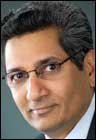Hong Kong International Airport (HKIA), which serves approximately 48 million passengers per year on flights to 150 locations, is now using RFID baggage tags for 100 percent of the 40,000 bags that leave the airport every day. HKIA has upgraded its former bar-code-based system with radio frequency identification, at a cost of HK$50 million (US$6.5 million).
The RFID system, which has a higher read rate than the bar-code system, has improved handling capacity, according to an e-mailed response from the corporate communications office of Airport Authority Hong Kong (AAHK), which operates the airport. “Passengers, airlines and Airport Authority Hong Kong have all benefited from the RFID application,” the communications office reports, “in terms of processing efficiency, reliability and capacity enhancement.”
Thanks to luggage tags with embedded RFID inlays, the airport’s baggage-processing system is more streamlined. Instead of airport workers having to manually hand-scan each item before it is directed to an airplane for loading, the bags now simply pass fixed interrogators installed at various points along the airport’s many long conveyor belts that transport items from check-in to each plane.
To continue its RFID program, which began in 2004 (see Hong Kong’s Airport to Tag Bags), the airport recently signed a three-year contract with Motorola and its partners, Avery Dennison and Print-O-Tape. Avery Dennison will supply its AD-833 UHF EPC Gen 2 inlays, while Print-O-Tape will convert those inlays into self-adhesive, 21-inch-long baggage tags.
All of the airport’s 70 airlines are participating in the program, printing and scanning tags for luggage being checked in at their respective terminals. When a bag is checked in, a baggage tag’s RFID inlay is encoded with a unique ID number, as well as the Julian date (a number indicating the date and time). The flight number and the three-letter code representing the destination airport are printed on the front of the tag, as is the tag’s ID number, in both text and bar-code formats. The RFID number then links to data in HKIA’s back-end baggage-handling system, such as the name of the passenger who owns the bag, the flight number and the destination airport. Once it is printed and encoded, the self-adhesive baggage tag is folded around the bag’s handle, in the same manner in which other airports worldwide attach bar-code-based baggage ID tags
Passengers also have the option of using airport check-in desks, located at the Kowloon and Hong Kong train stations, as well as at certain motel properties in the Pearl River Delta area. In such scenarios, the travelers’ luggage will still be fitted with RFID-enabled baggage tags, just as they would have received at the airport.
Matrics—an EPC RFID hardware developer and manufacturer later purchased by Symbol Technologies and, ultimately, by Motorola—was instrumental in helping plan the airport’s original business case, says Pankaj Shukla, director of Motorola’s business development for RFID. Specifically, Matrics supplied hardware and tags to HKIA’s initial RFID pilot in 2005. Presently, HKIA employs more than 300 Motorola XR400 and AR400 fixed RFID readers installed at check-in locations and along conveyor belts throughout the airport.
Additionally, employees utilize Motorola MC9090-G RFID handheld interrogators to read a tag’s RFID inlay in the event, for example, that a bag is misrouted and needs to be identified.
Since the introduction of integrated RFID tags, AAHK’s communications office reports, the overall read-rate accuracy of the airport’s baggage-handling system has increased from an average of 80 percent for bar-code-only tags to 97 percent for the integrated RFID tags. This efficiency gain enables the system to process approximately 5 percent more bags. As the number of bags being processed by automation increased, the average time required to process each piece of luggage has decreased, which is particularly important in easing baggage loads during peak hours.
“To maintain the position as one of the world’s best airports, HKIA is committed to providing reliable and efficient services with world-class facilities to its passengers,” AAHK’s communications office writes. “The application of RFID technology is one of [the] good examples to showcase HKIA as a forward-looking airport.”
Aviation has become a prominent market for RFID technology, notes Motorola’s senior marketing manager, Chris Warner.


